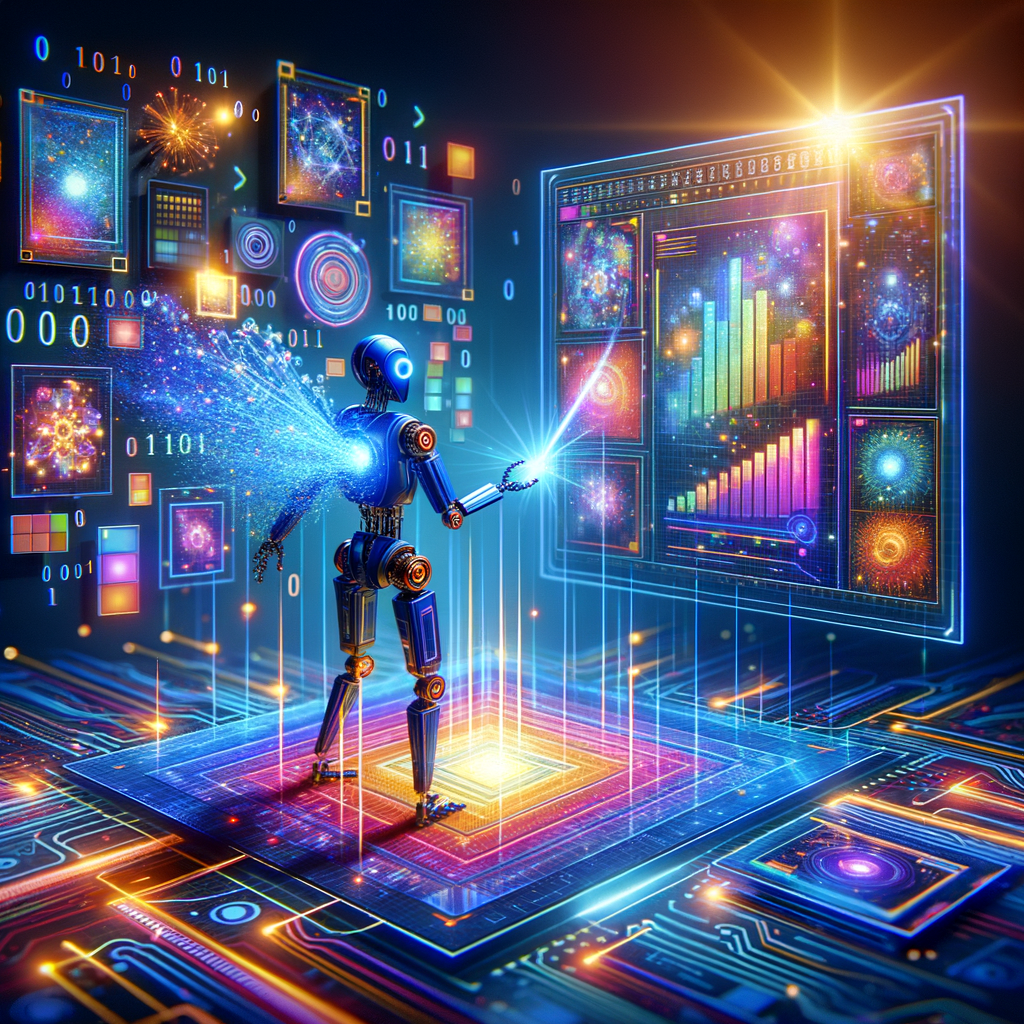
AI-Generated Landing Page Layouts: Stunning And Effortless
- What Are AI-Generated Landing Page Layouts?
- The Benefits of AI-Generated Landing Pages
- 1. Speed and Efficiency
- 2. Cost-Effectiveness
- 3. A/B Testing and Optimization
- Popular AI Tools for Landing Page Design
- 1. Unbounce
- 2. Landbot
- 3. Wix ADI
- Essential Elements of a High-Quality Landing Page
- 1. Clear Headline
- 2. Engaging Visuals
- 3. Strong Call to Action (CTA)
- 4. Social Proof
- 5. Simplified Forms
- Selecting the Right AI Tool for Your Needs
- Consider Your Goals
- Evaluate Ease of Use
- Assess Integration Options
- Explore Customization Features
- Best Practices for Using AI-Generated Landing Pages
- 1. Test Variations
- 2. Monitor Performance
- 3. Stay Updated
- 4. Iterate Based on Feedback
- Balancing Automation with Human Touch
- Conclusion
- FAQs
- 1. Can I customize AI-generated landing pages?
- 2. What kind of businesses benefit from AI-generated landing pages?
- 3. Are AI-generated landing pages SEO-friendly?
- 4. Do I need technical skills to use AI design tools?
- 5. How can I improve conversions on my landing page?
- 6. What if I need more than a landing page?
- 7. How do I choose the best AI tool for my needs?
- 8. Can I use AI-generated content on my landing pages?
- 9. What type of content should be on my landing page?
- 10. How often should I update my landing page?
- References
Understanding AI-Generated Landing Page Layouts
In today’s fast-paced digital world, the need for effective landing pages is more critical than ever. Landing pages drive conversions, gather leads, and engage visitors. However, designing a stunning landing page should not consume all your time and energy. Enter AI-generated landing page layouts. These smart solutions streamline the creative process while delivering impressive results.
Let’s explore how AI is transforming landing page design. We’ll discuss the benefits of using AI, popular tools available, and what you should consider when implementing AI-generated layouts.
What Are AI-Generated Landing Page Layouts?
AI-generated landing page layouts refer to designs produced through artificial intelligence systems. These systems analyze data, patterns, and user behavior to create layouts that resonate with potential customers. Users input basic information and preferences, and the AI crafts a visually appealing, functional landing page tailored to their needs.
This approach not only saves time but also reduces the pressure on non-designers. You no longer need extensive design knowledge to build a high-converting landing page. AI takes care of the heavy lifting.
The Benefits of AI-Generated Landing Pages
Utilizing AI for landing page design offers various advantages. Let’s unpack these benefits so you can grasp why they’re worth considering.
1. Speed and Efficiency
One of the most significant advantages of AI-generated designs is speed. Traditional design processes can be tedious. Custom layouts require brainstorming, revisions, and sometimes endless discussions. AI streamlines this process. It promptly delivers templates based on user input, cutting down design time dramatically.
You can create a functioning landing page in just minutes instead of weeks. Think of the time saved for testing strategies and optimizing content instead of getting bogged down in design.
2. Cost-Effectiveness
Hiring professional designers can get costly, especially for startups and small businesses. While a great design is vital for conversions, not everyone has the budget to frequently hire expert designers. This is where AI fills a gap.
AI tools typically come with subscription plans or one-time payments that are economical. You get a high-quality design without breaking the bank, making it accessible for businesses of all sizes.
3. A/B Testing and Optimization
A standout feature of AI tools is their ability to facilitate A/B testing. These systems can suggest variations on the layouts based on user behavior and preferences. This means you can test which designs lead to higher engagement and conversions.
Additionally, AI analytics can provide insights into which elements work. For example, you might find that a particular call-to-action button performs better in one color versus another. This data-driven approach helps optimize your landing pages for success continually.
Popular AI Tools for Landing Page Design
With the growing popularity of AI in design, various tools have emerged. Each has unique features, so let’s highlight a few notable ones:
1. Unbounce
Unbounce focuses on optimizing landing pages for conversions. Its AI tool analyzes your existing pages and suggests improvements. Using its drag-and-drop feature, you can easily modify elements to enhance your page’s performance.
Unbounce also offers templates ideal for different industries, ensuring that you find a design that fits your brand.
2. Landbot
Landbot employs AI in building conversational landing pages. Instead of the typical static design, it incorporates chat elements that engage visitors in real-time. This tool is perfect for brands seeking to enhance interactions and capture leads more effectively.
Its easy interface allows for seamless customization while leveraging AI-driven conversion techniques.
3. Wix ADI
Wix ADI (Artificial Design Intelligence) simplifies the entire web design process. You answer a few questions about your business and preferences, and it generates a stunning landing page design for you.
With Wix ADI, users without technical skills can still achieve a professional-looking site. It’s particularly beneficial for solopreneurs and small businesses.
Essential Elements of a High-Quality Landing Page
Even when using AI-generated layouts, it’s important to understand essential components that contribute to a great landing page. Here’s what you should focus on:
1. Clear Headline
A compelling headline grabs attention. It should communicate the primary offer or benefit effectively, enticing users to read further. Ensure the headline aligns with the ad or link that brought visitors to the page for consistency.
2. Engaging Visuals
Images, videos, and other visuals should reinforce your message. High-quality visuals capture attention and maintain engagement. However, don’t clutter the page—balance is key!
3. Strong Call to Action (CTA)
The CTA is arguably the most crucial element. It should stand out and clearly guide users on what to do next. Phrases like “Get Started,” “Sign Up,” or “Download Now” can prompt action.
4. Social Proof
Incorporating testimonials, reviews, or case studies builds credibility. People love to see that others have had positive experiences with your product or service. This social proof can encourage them to convert.
5. Simplified Forms
If you want visitors to fill out forms, prioritize simplicity. The less information you request, the higher the chances of conversions. Keep it short and sweet to minimize friction.
Selecting the Right AI Tool for Your Needs
Choosing the right AI tool can feel overwhelming due to the numerous options available. Here are a few tips to help you make the right choice:
Consider Your Goals
Before selecting a tool, define your objectives. Are you looking to drive sales, gather leads, or improve user engagement? Understanding your end goal ensures you choose a tool that aligns with your strategy.
Evaluate Ease of Use
Look for tools with user-friendly interfaces and robust support resources. Read reviews or even try demos to gauge usability. You want a solution that doesn’t require extensive training or technical skill.
Assess Integration Options
Check how well the tool integrates with your existing digital ecosystem. Can it seamlessly connect with your email marketing software, CRM, or analytics platforms? These integrations are crucial for streamlining your operations.
Explore Customization Features
Customization options play a significant role in how well your landing page reflects your brand. Ensure that the AI tool allows for personalized adjustments beyond just basic layouts.
Best Practices for Using AI-Generated Landing Pages
Once you’ve selected an AI tool, follow these best practices to maximize results:
1. Test Variations
Don’t settle for the first design. Use A/B testing to compare different layouts, headlines, and CTA placements. This iterative approach allows you to continuously refine your landing page.
2. Monitor Performance
Analyze metrics like conversion rates, bounce rates, and click-through rates. Understanding how your landing page performs will inform any necessary adjustments.
3. Stay Updated
Stay informed about the latest trends in landing page design and AI technology. The digital landscape evolves rapidly; keeping your designs fresh can help maintain engagement.
4. Iterate Based on Feedback
Gather feedback from real users to identify pain points. Implement changes based on real experience rather than assumptions. Continual improvement is key to long-term success.
Balancing Automation with Human Touch
AI brings immense power to landing page design, but balancing automation with a personal touch is essential. While AI can suggest optimal layouts, human insight remains irreplaceable.
Your brand voice, values, and vision should shine through in your content. Use AI-generated layouts as a foundation, but don’t hesitate to tweak them based on your unique perspective and user feedback.
Conclusion
AI-generated landing page layouts offer incredible potential for businesses seeking to enhance their online presence. They save time and money while providing effective designs that attract visitors and drive conversions.
Incorporating AI into your landing page strategy can give you a competitive edge. However, it’s essential to balance automated processes with human insights. By monitoring performance, iterating based on user feedback, and retaining your brand’s essence, you can harness AI’s power for stunning and effortless designs.
FAQs
1. Can I customize AI-generated landing pages?
Absolutely! Most AI tools allow for substantial customization to fit your brand and preferences.
2. What kind of businesses benefit from AI-generated landing pages?
Businesses of all sizes and industries can benefit, including startups, e-commerce brands, and service providers.
3. Are AI-generated landing pages SEO-friendly?
Yes, many AI tools consider SEO factors, ensuring that your landing page is optimized for search engines and user experience.
4. Do I need technical skills to use AI design tools?
Most tools are designed for users with little to no technical skill. They offer intuitive interfaces and easy customization options.
5. How can I improve conversions on my landing page?
Utilize A/B testing, compelling visuals, clear CTAs, and social proof to enhance user engagement and drive conversions.
6. What if I need more than a landing page?
Many AI platforms provide options for creating entire websites, so you can manage all aspects of your online presence from one tool.
7. How do I choose the best AI tool for my needs?
Define your goals, assess ease of use, evaluate integrations, and explore customization features to find the best match for your needs.
8. Can I use AI-generated content on my landing pages?
Yes, you can incorporate AI-generated copy, but ensure it aligns with your brand voice and resonates with your audience.
9. What type of content should be on my landing page?
Include a clear headline, engaging visuals, a strong CTA, social proof, and a simplified form to capture leads.
10. How often should I update my landing page?
Regularly update your landing page based on performance metrics and user feedback, aiming for continual improvement.
References
1. Unbounce
2. Landbot
3. Wix ADI
4. HubSpot on Landing Pages
5. Neil Patel’s Guide to A/B Testing
By leveraging AI-generated layouts, you empower your online marketing efforts while freeing up valuable time to focus on what really matters.

